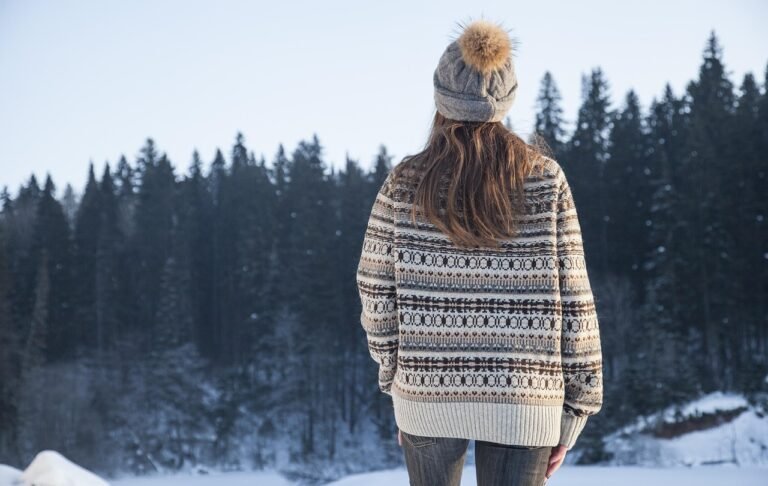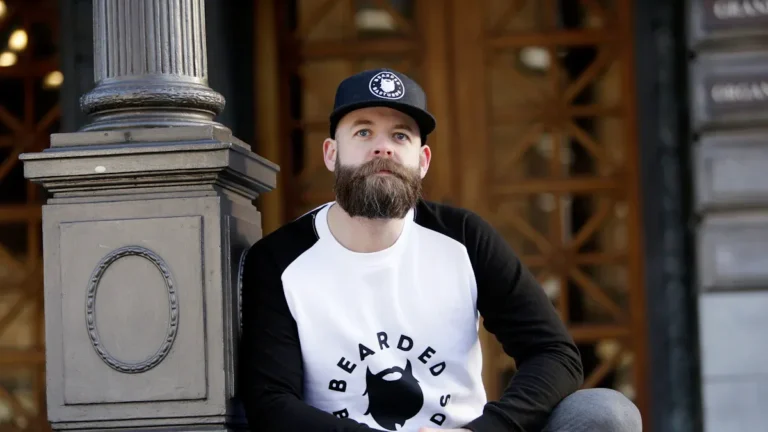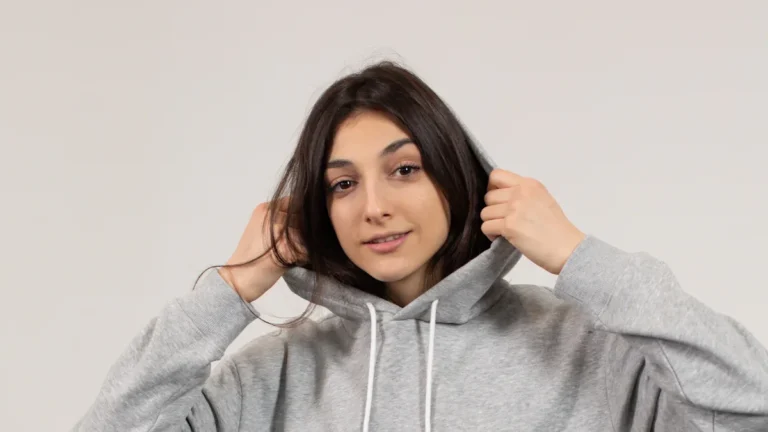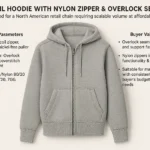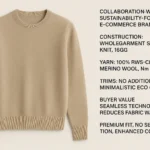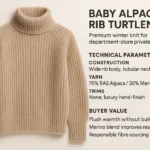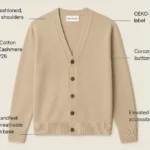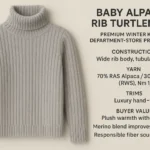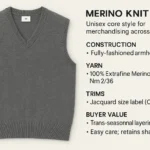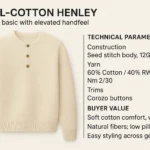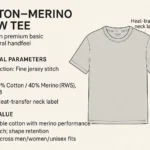
Knitting welcomes everyone, no matter your experience. When you learn to knit for beginners, you only need two moves: the knit stitch and the purl stitch. These basic knit and purl stitches open the door to endless patterns. Experts say that mastering knit and purl lets a beginner move on to new techniques with confidence. You can spot the difference between knit and purl stitch by how each stitch feels and looks. This guide helps you notice those small details and gives you tips for every step.
Touch each stitch as you work.
Look closely at how the yarn sits on your needles.
You can use these cues to understand, fix, and combine knit and purl for any project.
Key Takeaways
Learn the knit and purl stitches. These two moves are the base of all knitting projects.
Practice often to help your hands remember. Knowing the stitches makes each project easier and more fun.
Use your fingers to feel the stitches. The smooth Vs are knit stitches, and the bumpy ones are purls. This helps you find mistakes early.
Try mixing different stitches together. Using knit and purl stitches lets you make many patterns and textures.
Be patient and keep working. Mistakes happen when you learn, and every project helps you get better at knitting.
Knit and Purl Stitches Basics

The Foundation
When you start to learn to knit for beginners, you meet two main moves: knit and purl stitches. These are the building blocks of almost every project. You can think of them as the ABCs of knitting. If you know how to make a knit stitch and a purl stitch, you can create many different looks and textures.
Here’s a quick look at what each stitch does:
Stitch Type | Description |
|---|---|
Knit | A stitch that creates a smooth, V-patterned fabric, commonly used in stockinette stitch. |
Purl | A stitch that creates a textured fabric, often used in combination with knit stitches to form various patterns. |
You use the knit stitch to make flat, smooth surfaces. The purl stitch gives your fabric a bumpy, textured side. When you combine them, you open up a world of patterns. This guide will help you spot the difference between each stitch and show you how to use them together.
Why It Matters
You might wonder why you need to focus on knit and purl stitches when you learn to knit for beginners. The answer is simple: almost every pattern uses these two moves. If you can knit and purl, you can make scarves, hats, blankets, and more.
Tip: Practice both stitches until your hands remember the motions. This will make every project easier!
Many patterns use a mix of knit and purl stitches. For example:
2×2 Ribbing: 2 knit stitches followed by 2 purl stitches.
1×1 Ribbing: 1 knit stitch followed by 1 purl stitch.
Custom combinations: Try 3 knit stitches, then 1 purl stitch.
Knit and purl stitches are the base for advanced designs, too. Once you master these, you can move on to cables, lace, and textured patterns. Every time you pick up your needles, you build on these basics. This guide will help you learn to knit for beginners and give you the confidence to try new things.
Identifying Stitches
Visual Differences
When you look at your knitting, you can spot the difference between a knit and a purl stitch by their shapes. Knit stitches look like tiny Vs. Purl stitches show up as little bumps. These clues help you know which side of your project you see.
Here’s a quick table to help you remember:
Stitch Type | Appearance | Side Indication |
|---|---|---|
Knit | V shape | Usually the right side |
Purl | Bump | Usually the wrong side |
You can also use this checklist:
Knit stitches form a V shape.
Purl stitches create bumps.
The right side of the fabric usually shows knit stitches.
The wrong side often shows purl stitches.
On the Needle
When you work on your project, you see both knit and purl stitches on your needle. If you see a V right below your needle, you just made a knit stitch. If you see a bump, you just made a purl stitch. Touch the stitches as you go. You will feel the smooth Vs and the bumpy purls. This habit helps you catch mistakes early and keeps your knitting neat.
Tip: Pause after a few rows. Run your finger along the stitches. You will start to notice the difference between knit and purl by touch alone!
Stitch Reversal
Some patterns use both knit and purl stitches to make the fabric look the same on both sides. This is called stitch reversal. You might want this for scarves or blankets, where both sides show. Reversible stitches give your project a polished look and help it keep its shape. Double knitting uses both knit and purl stitches together. This makes your fabric stretchy and warm. You can try these techniques to make your projects look great from any angle.
Making Knit and Purl

Learning how to make a knit stitch and a purl stitch is the heart of knitting. Once you know these moves, you can tackle any project with confidence. This section gives you step-by-step instructions and tips to help you master both stitches. You will also learn how to switch between them and keep your yarn in the right place.
How to Make the Knit Stitch
If you want to know how to make a knit stitch, follow these simple steps. This tutorial breaks it down so you can practice at your own pace.
Start with a slip knot. Leave a yarn tail about three times the width of your project.
Place the slip knot on one needle. Hold this needle in your right hand if you are right-handed.
Hold the long yarn tail in your left hand. Wrap it around your first finger.
Slip the needle tip under the loop on your finger.
Grab the yarn from the ball and bring it over the finger loop.
Slip the loop off your finger and onto the needle tip.
Gently pull the yarn in your left hand to close the loop.
You now have two stitches on your needle.
To make a knit stitch, hold the yarn in your left hand and wrap it through your fingers.
Insert the right-hand needle into the first loop on the left needle.
Wrap the yarn around the right needle counter-clockwise.
Pull the right needle back through the loop, keeping the new loop on the right needle.
Slip the old loop off the left needle.
Tip: Practice these steps slowly. Watch how the yarn moves and how each stitch forms. This will help you build muscle memory.
Common mistakes can happen when you first learn how to make a knit stitch. You might notice your stitches look uneven or you drop a stitch by accident. Here are some ways to avoid these problems:
Try different ways to hold your yarn until you find one that feels comfortable.
If you drop a stitch, use a crochet hook to pick it up right away.
Choose a cast-on method that feels easy for you. There are many options, so experiment to find your favorite.
How to Purl
Now let’s look at how to make a purl stitch. The purl stitch creates a bumpy texture and is just as important as the knit stitch. Here are the instructions you need:
Gather your materials. Use knitting needles and yarn that match in size.
Hold the needle with stitches in your left hand. Hold the empty needle in your right hand.
Insert the right needle from right to left into the first stitch on the left needle.
Bring the working yarn to the front of your work.
Wrap the yarn around the right needle in a downward, counter-clockwise motion.
Pull the right needle through the stitch, bringing the new loop with it.
Slide the old stitch off the left needle, leaving the new stitch on the right needle.
Repeat these steps for each stitch on your left needle.
Note: Keep the yarn in front when you purl. If the yarn is in the wrong place, you might accidentally make an extra stitch.
When you first learn how to make a purl stitch, you might run into a few problems:
If you see an extra stitch at the end of a row, check your yarn placement. Make sure you do not pull the yarn over the needle by mistake.
If your yarn splits, try using a smoother yarn or check your needle size.
Always check that each stitch is complete before moving to the next one.
Switching Stitches
Switching between knit and purl stitches in the same row can feel tricky at first. You might wonder how to keep track of which stitch comes next. Here are some tips to help you:
Before you start, look at your last row. Did you end with a knit or a purl? This helps you avoid confusion.
The knit side looks flat with V shapes. The purl side has bumps, like little pearls.
Practice switching stitches by making a simple dishcloth. This gives you a chance to repeat the moves and get comfortable.
Tip: If you lose track, just look at your stitches. The Vs mean knit, and the bumps mean purl.
Yarn Placement
Yarn placement is key when you move between knit and purl stitches. If you keep the yarn in the right spot, your knitting will look neat and even. Here’s what you need to remember:
Keep the working yarn behind the needle tips when you knit.
Move the yarn to the front when you purl.
When you switch from knit to purl, pull the yarn between the needle tips to the front.
When you switch from purl to knit, move the yarn between the needle tips to the back.
Tug the yarn gently when you switch stitches. This helps prevent gaps between your stitches.
Note: If your yarn or needles feel slippery, adjust your tension. Hold the yarn a little tighter to keep your stitches even.
With practice, you will get faster at moving the yarn and switching between knit and purl stitches. Soon, you will be able to create all kinds of patterns and textures. Remember, every knitter starts with these basics. Keep practicing, and you will see your skills grow!
Reading Your Knitting
Spotting Stitches
You might wonder how to spot each stitch in your knitting. Reading your knitting helps you follow patterns and fix mistakes. When you look at your work, you can see the difference between a knit stitch and a purl stitch. Knit stitches make a smooth surface with V shapes. Purl stitches look like tiny bumps, almost like pearls. The yarn exits from the back for knit and from the front for purl. Try touching each stitch as you go. You will start to feel the difference. If you work on ribbing, count in your head: k2, p2, k2, p2. This helps you recognize each stitch and keeps your pattern on track.
Counting Rows
Reading your knitting also means counting rows. You want to know how far you have come in your project. Here are some easy ways to keep track:
Use stitch markers to mark every 10 stitches. This makes counting simple.
Keep a tally on paper. Mark each row as you finish it.
Count the live stitches on your needle. This gives you an instant progress check.
For finished pieces, touch each stitch in a horizontal row to count.
Tip: Counting rows helps you follow instructions and finish your project with the right size.
Troubleshooting
Sometimes you notice something looks off. Reading your knitting lets you spot mistakes early. If you see a wrong stitch, you can fix it. Slip the stitches purl-wise from the left needle to the right until you reach the mistake. Drop the stitch and ladder down to the purl stitch. Use a crochet hook to pick up the correct stitch. Ladder up by pulling the thread through each loop until you reach the top. Place the stitch back on your needle. Repeat for any other mistakes.
Common Mistakes
You may find common mistakes when you read your knitting. Sometimes you mix up knit and purl stitches. You might drop a stitch or add an extra one. If this happens, use the tutorial steps above to fix it. Always check your work after each row. Reading your knitting gives you confidence and helps you enjoy the process.
Patterns with Knit and Purl
You can create so many textures just by combining knit and purl stitches. Each pattern has its own look and feel. When you learn how to switch between knit and purl stitches, you open up a world of stitch combinations. Let’s look at some of the most popular patterns you can try.
Garter Stitch
Garter stitch is the easiest pattern for beginners. You knit every stitch on every row. This pattern looks the same on both sides, so it’s reversible. Garter stitch feels thick and stretchy. You’ll notice bumpy ridges that make your project stable and soft. Many people use garter stitch for scarves and blankets.
Knit every stitch, every row
Reversible and stable
Great for beginners
Stockinette
Stockinette stitch is smooth on one side and bumpy on the other. You knit one row, then purl the next. This pattern is common in sweaters and hats. Stockinette can curl at the edges, so you might add a border to keep it flat.
Garter Stitch | Stockinette Stitch | |
|---|---|---|
Look | Bumpy, ridged | Smooth “V” knit side, bumpy purl side |
Texture | Thick, stretchy, soft | Smooth, flat, slightly stiff |
Curling | Lays flat | Tends to curl at edges |
Ribbing
Ribbing uses a mix of knit and purl stitches in the same row. You might see patterns like k2, p2. Ribbing makes your fabric stretchy. You’ll find ribbing in hat brims, sweater cuffs, and sock tops. It helps your project fit snugly.
Stretchy and elastic
Used for edges and trims
Seed and Moss
Seed and moss stitch patterns use alternating knit and purl stitches. These patterns create a bumpy, textured look. Seed stitch is simple and great for beginners. Moss stitch looks more structured and neat. Both patterns lay flat and add interest to your knitting.
Bumpy, textured surface
Easy to learn and fun to knit
Combining Knit and Purl
When you practice how to switch between knit and purl stitches, you can make endless patterns. Try different stitch combinations to see what you like best. You might create a basketweave or a checkerboard. Each pattern feels different in your hands. Combining knit and purl stitches lets you explore new textures and make your knitting unique.
Tip: Don’t be afraid to experiment with new stitch combinations. Every pattern starts with just knit and purl stitches!
You grow as a beginner knitter every time you practice both knit and purl stitches. Try making a scarf with new textures by mixing stitches. You might notice how planning and patience help you finish each scarf. Mistakes happen, but you can fix them with simple tricks like laddering down or using a crochet hook. Keep a glossary close to understand patterns and boost your confidence. Every beginner knitter learns by trying, so grab your yarn and start another scarf. You will soon feel proud as a beginner knitter who can make any scarf you imagine!
FAQ
What is the main difference between knit vs purl stitches?
You see the difference in how the yarn sits. Knit vs purl stitches create different textures. Knit stitches look like Vs. Purl stitches show bumps. This lesson helps you spot knit vs purl in any project.
Why do I need to learn both knit vs purl stitches?
You need both for almost every knitting tutorial. Knit vs purl stitches let you make patterns like ribbing and seed stitch. Each lesson builds on these basics. If you skip one, you miss out on many textures.
How can I remember which stitch is knit vs purl?
Touch your work. Knit vs purl feels different. Knit stitches feel smooth. Purl stitches feel bumpy. This lesson teaches you to check by sight and touch. Practice in each lesson until you know knit vs purl by heart.
Can I fix mistakes if I mix up knit vs purl stitches?
Yes! Every lesson in a knitting tutorial shows you how to fix mistakes. If you mix up knit vs purl, look for the Vs and bumps. Use a crochet hook to fix the stitch. Each lesson makes you better at spotting errors.
How do I combine knit vs purl stitches in one lesson?
You switch between knit vs purl stitches by moving the yarn. Each lesson in a knitting tutorial shows you how. Move the yarn to the front for purl, to the back for knit. Practice this lesson to master patterns like ribbing.
Tip: Every lesson you finish builds your skills. Try a new lesson with knit vs purl stitches each week!
Lesson Step | What to Practice |
|---|---|
1 | Knit vs purl basics |
2 | Switching stitches |
3 | Reading your work |
4 | Fixing mistakes |
5 | Trying new patterns |




